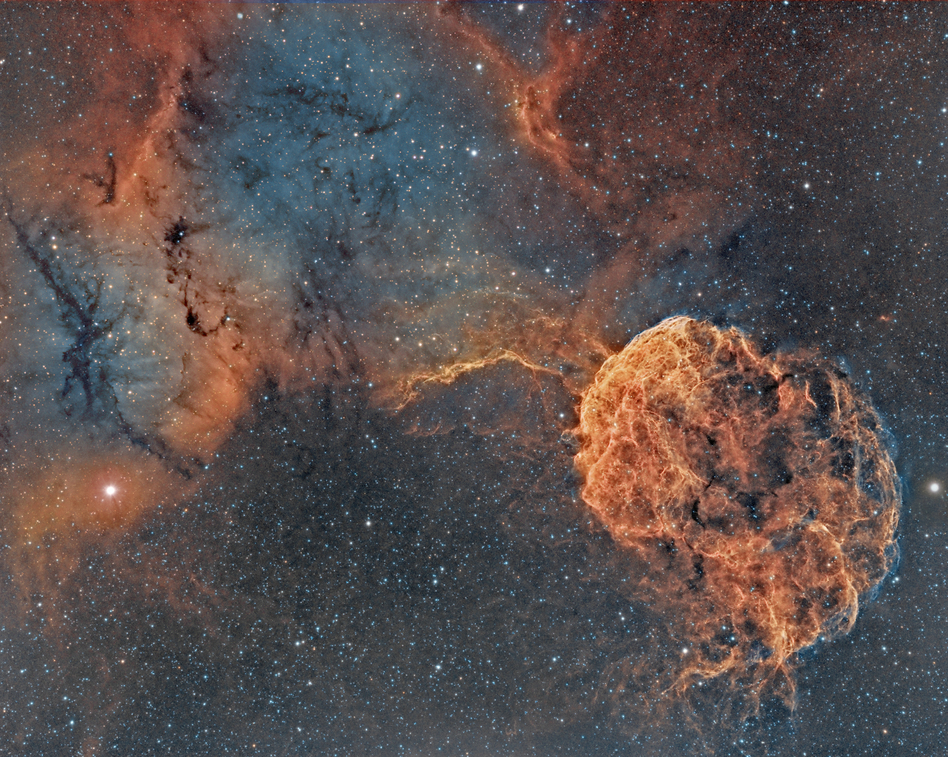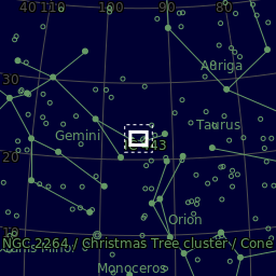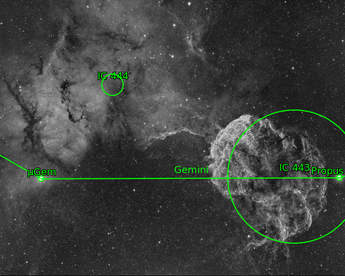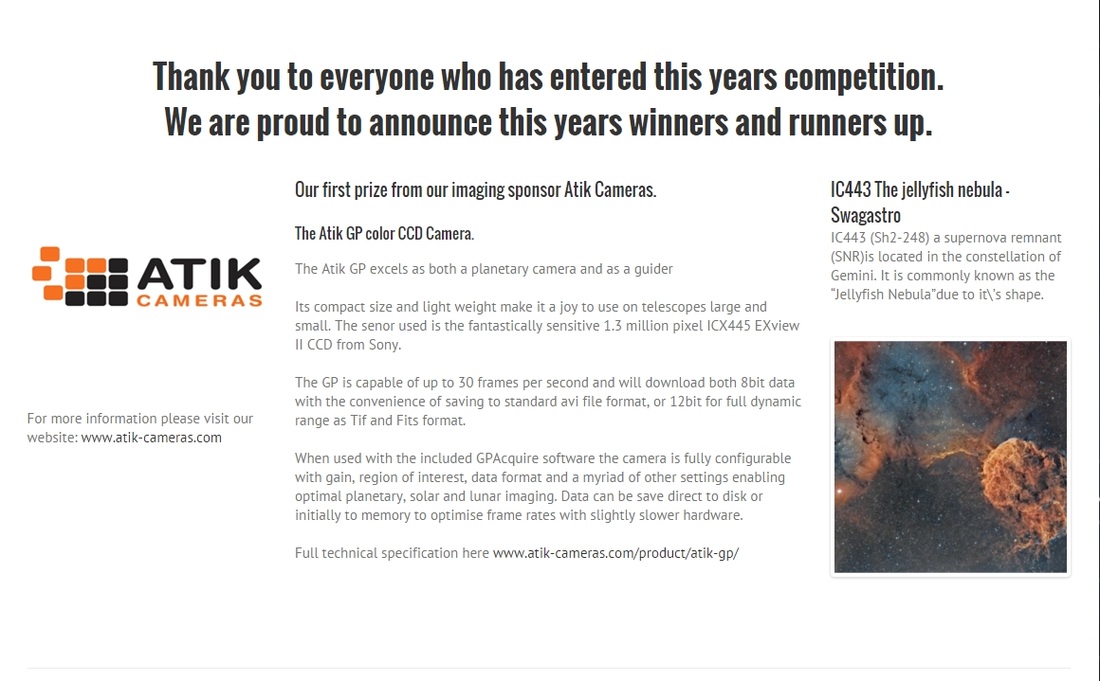IC443 - The Jellyfish nebula
|
IC443 (Sh2-248) a supernova remnant (SNR) is located in the constellation of Gemini. It is commonly known as the “Jellyfish Nebula”due to it's shape.
These types of objects are created by one of the most important processes in the universe - a supernova event - when a star explodes and scatters the heavier chemical elements it has made during its lifetime back into space. This material will eventually form into future stars and planetary systems. IC443 is thought to have been formed between 30,000 and 35,000 years ago and is located about 5,000 light years away, Details M: Avalon Linear fast reverse T: Takahashi FSQ85 0.73x C: QSI690-wsg with 3nm narrowband filters. 14x1800s in Ha 13x1800s in OIII 13x1800s in SII 20 hours total exposure time |
Winner at the 2015 International Astronomy Show as sponsored by Atik cameras




